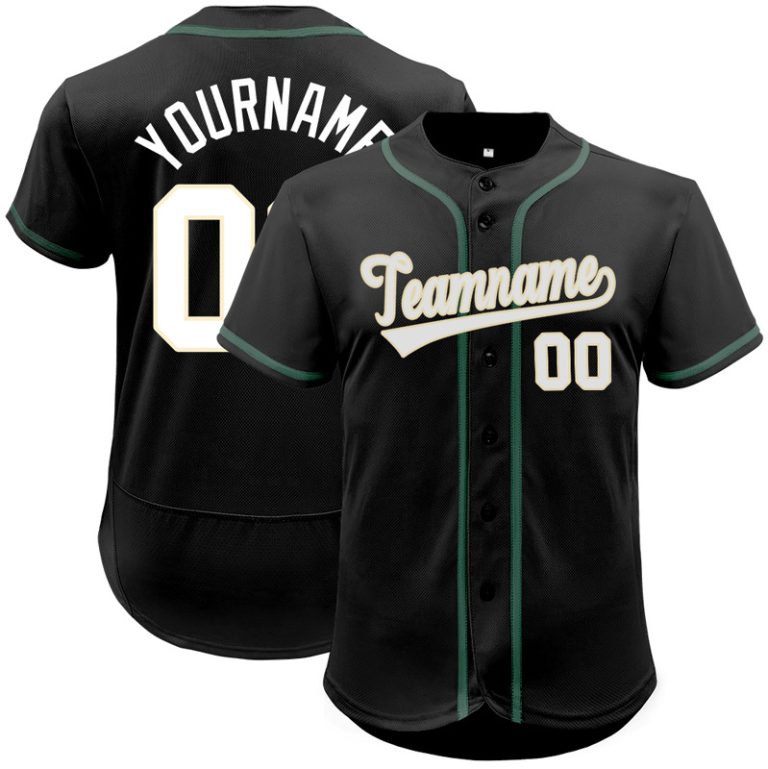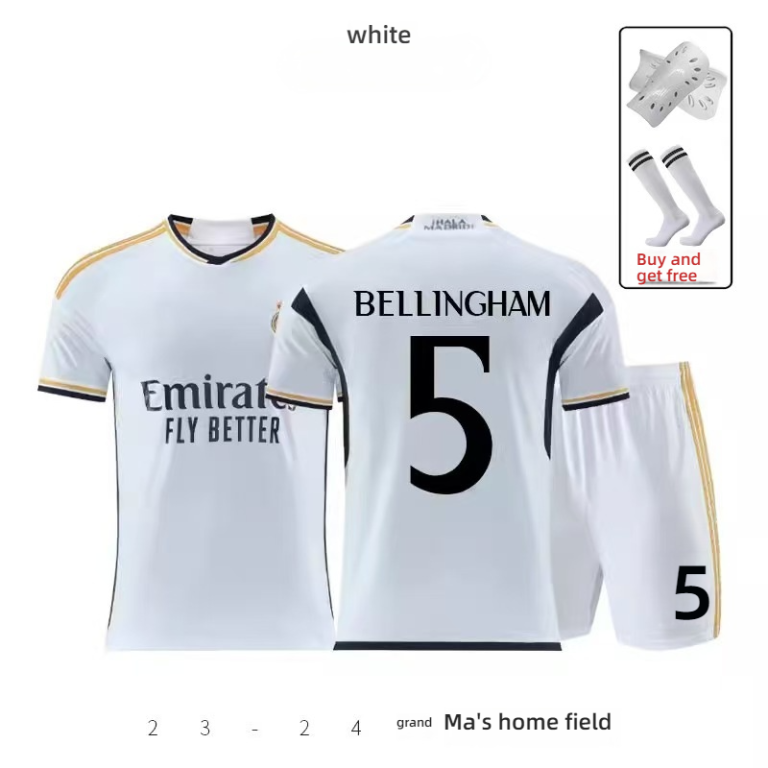7 No Jersey in Cricket: The Mystery Behind the Absence of the Number 7 in Cricket Jerseys
With the popularization and evolution of cricket, the jersey number has become an important symbol of a player’s identity and team spirit. However, in the long history of cricket, there is a unique phenomenon: the absence of the number 7 jersey. This article will explore the historical origins of this phenomenon and its impact on the modern allocation of cricket jersey numbers.
Background Overview: The Evolution of Cricket Shirts
The evolution of cricket shirts, as an indispensable part of this sport, carries a rich history and cultural significance. From their initial simple fabrics to the now colorful and uniquely designed shirts, the evolution process has witnessed the growth and transformation of cricket.
In the early days of cricket matches, shirts were merely simple long-sleeved garments used to protect players’ shoulders and arms. Those shirts were monochromatic, predominantly white or light-colored, with the main purpose of increasing visibility on the grass. As cricket became more widespread, the design of the shirts began to incorporate more elements, such as team logos and sponsor logos.
In the 20th century, the design of cricket shirts began to undergo significant changes. The colors of the shirts became more varied, no longer limited to white, with bright hues like red, blue, and green appearing on the shirts. At the same time, the fabric of the shirts changed from the original cotton to lighter, breathable synthetic materials, making players more comfortable during matches.
The styles of the shirts have also evolved continuously. Early shirts were mostly long-sleeved, but with the international development of cricket, the styles have become increasingly diverse. Short-sleeved, sleeveless, and vests have emerged to meet different climatic conditions and personal preferences of players.
It is also worth mentioning that the numbers on cricket shirts have changed over time as well. Initially, shirt numbers were mainly used to distinguish players, but with the refinement of match rules, they have come to carry more meaning. For example, the number one shirt is typically worn by the captain, symbolizing leadership and responsibility.
The evolution of cricket shirts is not just a development of materials and technology but also a of culture and tradition. From the initial simple fabrics to the now functional and aesthetically pleasing shirts, each shirt carries the profound heritage and unique charm of cricket.
The absence of the number 7 shirt in cricket has become a unique phenomenon. Although the number 7 shirt is very common in many other sports, it is almost unseen in cricket. This phenomenon has deep historical roots and traditional explanations.
It is believed that the absence of the number 7 shirt originated from the early rules of cricket. At that time, the number 7 player was usually the wicketkeeper, who often had to perform high-risk tasks in the match. To reduce the likelihood of injury to the wicketkeeper, the rules at that time prohibited them from wearing the number 7 shirt. Over time, this rule gradually evolved into a tradition, and even though the role and risk level of the wicketkeeper have changed, the absence of the number 7 shirt has still been retained.
Although the number 7 shirt is rarely seen in cricket, its influence and symbolic meaning have not diminished. In modern cricket, the allocation of shirt numbers is more focused on the technical characteristics and roles of players in the match. While the number 7 player no longer specifically refers to the wicketkeeper, this number is often associated with young players or rising stars, representing the future and hope of the team.

The meaning and rules of jersey numbers
The jersey wide variety in cricket isn’t handiest a identifier for gamers but additionally incorporates wealthy importance and a strict set of regulations.
The allocation of jersey numbers is closely related to the team’s lineup, commonly determined via the participant’s position and position on the sector. for instance, bowlers, batsmen, wicketkeepers, and different roles have unique number ranges.
In cricket suits, the number 1 is generally awarded to the captain, symbolizing leadership and responsibility. The captain serves as the group’s religious chief and plays a key position in tactical on the sector and group coordination.
The wicketkeeper is normally assigned the range 7 or eight, as they play a critical function requiring brief reactions and unique judgments. The range 7, whilst no longer having a specific ancient heritage, has end up quite a number for wicketkeepers in a few leagues.
Bowlers and batsmen are normally assigned numbers from three to six and from 9 to 11. these numbers do now not have particular regulations but are regularly allotted based totally at the participant’s order and the crew’s subculture.
The policies for jersey numbers additionally involve substitutes. replacement gamers’ numbers are usually higher than those of starting players to make certain continuity and readability in changing gamers on the sphere. as an instance, if variety nine is the starting batsman’s jersey, range 10 is probably his substitute.
some cricket leagues have special number setups, along with the “zero” jersey, that is frequently given to gamers who have accomplished rather properly but were not selected for the beginning lineup. This arrangement goals to encourage opposition and team spirit amongst players.
The allocation and regulations for jersey numbers also mirror the culture and admire in cricket subculture. players hold a experience of reverence for the choice and allocation of numbers, viewing it as a manner to individual honor and crew spirit.
Jersey numbers are also associated with sponsors. In commercial cricket activities, sponsors may request changes to the allocation of numbers to align with their logo photograph or advertising and marketing techniques.
Jersey numbers in cricket are extra than simply digits; they represent the participant’s position, function, honor, and team spirit. The intertwining of these rules and meanings makes each jersey a witness to the participant’s identity and the team’s records.

“7th jersey” holds a special status in cricket.
In cricket, the jersey range isn’t simplest a image of the gamers’ identities, however it additionally incorporates wealthy cultural significance and tactical considerations. among them, the number 7 jersey holds a special area inside the cricket world due to its specific records and symbolic meaning.
In cricket, jersey numbers normally represent the position and function of the players on the field. but, the wide variety 7 jersey is regularly intently associated with certain gamers and legendary tales. it’s also assigned to those with high-quality skills, precise patterns, or the potential to turn the tide in key moments.
traditionally, many tremendous cricketers have worn the wide variety 7 jersey. for example, the Indian legend Sachin Tendulkar wore the wide variety 7 for the duration of his profession with the Indian country wide team. Tendulkar is famend for his awesome batting abilties and numerous conventional fits, and his quantity 7 jersey has end up a image of Indian cricket.
except Tendulkar, other outstanding cricketers like Mark Waugh and Cyril Stuart from Australia, Ian Botham and Ken from England, and Shahid Ahmed from Pakistan have all showcased their prowess on the sphere within the variety 7 jersey.
The variety 7 jersey in cricket also consists of a sense of mystique. It appears to be connected with gamers who can lead their groups to victory. This connection isn’t always simply based totally on the players’ personal capabilities, but extra of a spiritual image. The variety 7 jersey is frequently seen as a honor, representing the special repute of the participant within the group and their preference for victory.
Tactically, the wide variety 7 jersey also gives flexibility. because it is not constrained to a specific role, players can modify their positions in step with the instruct’s tactical preparations. this adaptability makes the wide variety 7 jersey a key position in many teams.
it is also really worth noting that the range 7 jersey is related to precise cricket cultures in a few countries or regions. as an instance, in India, the number 7 jersey is carefully linked with the popularization and prevalence of cricket, turning into one of the symbols of the game.
The special popularity of the variety 7 jersey in cricket stems from the legendary figures it represents, the religious symbolism it embodies, and its tactical flexibility. it’s far extra than just a piece of cloth; it’s far an fundamental a part of the history and way of life of cricket.

Why isn’t there a number 7 jersey: historical and traditional explanations
In cricket, the jersey number is not just an identifier; it embodies the player’s personality, position, and the history of the team. However, there is a unique phenomenon in cricket where there is no jersey number 7. This tradition has deep historical roots and rich cultural significance.
The numbering of cricket jerseys starts from 1 and typically ends at 11, corresponding to the starting lineup of the team. Each number represents a different role and responsibility, with number 1 usually being the captain and number 11 the wicketkeeper. Nevertheless, the absence of the number 7 jersey in cricket is not coincidental.
The allocation of jersey numbers in cricket’s long history is closely linked to the development of cricket rules. In the late 19th century, as cricket rules began to be standardized, jersey numbers were also officially introduced. The allocation of jersey numbers at that time was based on the player’s position and role on the field, and the absence of the number 7 jersey is related to changes in cricket rules.
It is recorded that the absence of the number 7 jersey may be related to a controversial event in cricket history. In the 19th century, there was a role called the “wicketkeeper” in cricket matches, who was responsible for defending the ball, similar to the modern wicketkeeper. However, as the rules of the game evolved, the role of the wicketkeeper was gradually phased out, and the players who were originally responsible for the wicketkeeper were assigned to other positions. Since the wicketkeeper played a special role at the time, the number 7 jersey also disappeared with the role.
The absence of the number 7 jersey may also be related to cricket traditions. In cricket culture, the number 7 itself has symbolic meaning. In many cultures, 7 is considered a sacred number, representing perfection and completeness. Therefore, using the number 7 jersey in cricket matches might be seen as inauspicious. To avoid such cultural taboos, the number 7 jersey was excluded from the jersey numbering.
Over time, the development of cricket has made the symbolic meaning of jersey numbers more diverse. Although the number 7 jersey no longer appears in cricket matches, its absence has not affected the players’ performance or the enthusiasm of the fans. On the contrary, players have shown their personalities through other means, such as signatures and patterns on their jerseys.
In modern cricket, the allocation of jersey numbers is more flexible and is not limited to positions on the field. Some players may choose specific numbers due to personal preference or special agreements with the team. Despite this, the absence of the number 7 jersey remains a unique tradition, reminding people of the long history and rich cultural heritage of cricket.
The absence of the number 7 jersey in cricket is an interesting phenomenon, reflecting the historical evolution of cricket rules and the traditions and beliefs in cricket culture. Although this number no longer appears on jerseys, it still holds an indispensable place in cricket history and culture.

The impact and alternative for the missing No. 7 jersey.
In cricket, the absence of the number 7 jersey has led to a series of impacts and substitute phenomena. Here is a detailed description of this phenomenon:
The jersey number serves as a symbol of a player’s identity and plays an important role in cricket matches. However, the number 7 jersey has not been adopted in most cricket matches, and this phenomenon has deep historical roots.
The allocation of jersey numbers is usually related to a player’s technical skills, team tactical arrangements, and personal preferences. The absence of the number 7 jersey is due to both the traditional habits of the sport and the psychological perceptions of the players.
Historically, the allocation of jersey numbers in cricket was not as strict as it is now. In the early days of cricket matches, players did not have fixed numbers and chose jerseys based on their order of appearance or personal preferences. With the standardization of matches, jersey numbers began to be assigned specific meanings. However, the number 7 jersey has never become mainstream.
The absence of the number 7 jersey has had an impact on both players and teams. On one hand, players may be unable to express their personal style or pursue specific honors due to the lack of this number. On the other hand, teams may lose a unique option in tactical arrangements.
To compensate for the absence of the number 7 jersey, some teams and players have taken substitute measures. For example, some players may choose numbers similar to or related to 7, such as 6 or 8, to convey a similar spirit or symbolic meaning. Additionally, some teams have innovated in jersey design, using colors, patterns, or slogans to embody the spirit of the number 7 jersey.
In certain cricket leagues or tournaments, the special status of the number 7 jersey is attributed to other numbers. For instance, some leagues might link the number 7 with a team’s core player or legendary figure, giving the number some symbolic significance.
The absence of the number 7 jersey in cricket culture has also sparked discussions about fairness and diversity. Some fans and commentators believe that all numbers should be treated equally, and the absence of the number 7 jersey may suggest some form of inequality. This perspective has prompted some cricket organizations to reconsider the rules for jersey number allocation.
Despite the number 7 jersey not being officially present in cricket, its influence and symbolic meaning still exist. Players express their respect and yearning for this number through their choice of substitute numbers or jersey designs. As the sport continues to evolve and change, there may be new rules and traditions to fill this gap in the future.

Certainly, here is the translation:” modern cricket
In modern cricket, the allocation of jersey numbers is not only a means of identifying players but also carries tactical and traditional significance. Here is a description of how modern cricket jersey numbers are allocated:
The player’s number usually corresponds to their role and position within the team. For example, openers and batsmen are typically assigned with jersey numbers 1 or 2, while wicketkeepers might wear numbers 13 or lower. Here are some specific details regarding the allocations:
-
Openers and Batsmen: In cricket, openers and batsmen are the team’s most important attackers. They are usually given jersey numbers 1 or 2, which have historically been symbols of honor. The number 1 is often assigned to the captain, symbolizing leadership and responsibility.
-
Wicketkeepers: Wicketkeepers play a crucial defensive role in cricket. Their jersey numbers are usually lower, such as 13 or 14, and sometimes even lower to reflect their special position in the tactical setup.
-
Fast Bowlers and Spin Bowlers: These players are responsible for hitting fast deliveries in cricket. Their numbers typically range from 3 to 6, depending on their tactical role within the team.
-
Support Batsmen: In cricket matches, there may be additional batsmen joining to enhance the team’s attacking power. These players’ jersey numbers usually fall between 7 and 11.
-
Midfield Players: Midfield players are responsible for transitioning between attack and defense in cricket. Their jersey numbers generally range from 12 to 15.
-
Fielders and Bowlers: Fielders are responsible for defense in cricket, while bowlers are the core of the team’s bowling strategy. Their jersey numbers usually range from 16 to 20.
-
Substitute Players: Substitute players’ jersey numbers are typically above 21, and these numbers are not fixed, as they can be assigned to any player as needed.
The allocation of jersey numbers is also influenced by traditional factors. For example, in some countries, specific numbers may have special meanings due to historical reasons. In British cricket, for instance, the number 3 is sometimes considered a “lucky number” because some famous players have achieved great success while wearing it.
The allocation of jersey numbers is also influenced by internal team regulations. Some teams may have their own traditions, such as permanently reserving certain numbers for legendary players or allocating numbers based on players’ personal preferences.
In cricket, the allocation of jersey numbers is not just an identifier but also an expression of tactical arrangements and team culture. As the sport of cricket becomes more widespread and develops, the allocation of jersey numbers continues to evolve to adapt to different formats and tactical needs.






